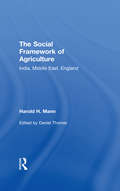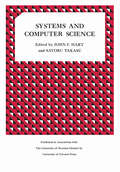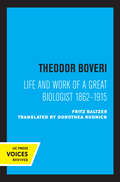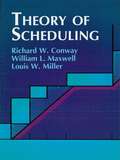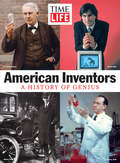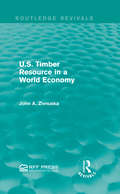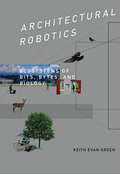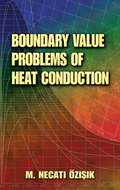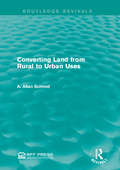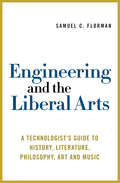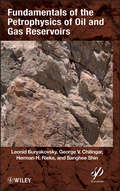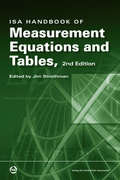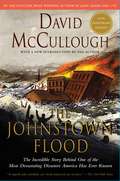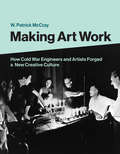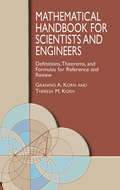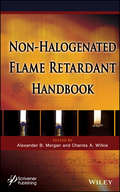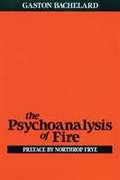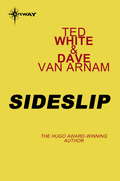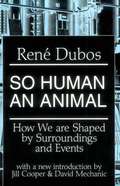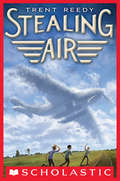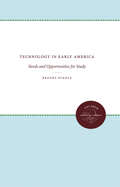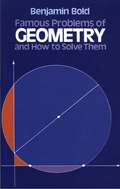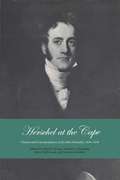- Table View
- List View
Social Framework of Agriculture: India, Middle East, England (Routledge Revivals Ser.)
by Harold H. MannFirst Published in 1968. Dr. Harold H. Mann was during his lifetime an acknowledged authority on applied science and agriculture in England, the Middle East and India, but it is less widely known that he was equally distinguished by his work in the social sciences. He not only pioneered modern-style village surveys in both England and India, but also modern style urban surveys and studies in India. There he broke new ground in his remarkable first-hand research on agricultural labour, village economics, depressed or “Untouchable” classes in town and country, and human and industrial relations in India’s first steel town, Jamshedpur. This book reproduces thirty-five of Dr. Mann’s papers—in whole, in part, or in summary.
Systems and Computer Science: Proceedings of a Conference held at the University of Western Ontario September 10-11, 1965
by John Hart Satoru TakasuThis book presents the papers delivered at the Conference on Systems and Computer Science held at the University of Western Ontario in September 1965. The primary purposes of the Conference were the promotion of research and the development of the teaching of computer science in Canadian universities. The papers focus attention on some of the concepts of Computer Science as a new field of study and at the same time provide a background for scientists looking at the subject for the first time. The chief developments in computer science have been concerned with the "applied" rather than the "pure" areas of the field: numerical analysis, applied statistics and operations research, and data processing. But there is something more to computers than the physical components and this book represents an attempt to correct the imbalance between "applied" and "pure" by drawing attention to certain theoretical aspects of computer and information science. Among the topics discussed are the theory of finite and infinite automata, aspects of formal language theory, heuristic and non-heuristic approaches to theorem proving and the mathematical formulation of the theory of general systems. There are also references to the problems of machine design, to software systems including higher-level languages, to multiple control computer models and to applied systems. This collection of papers will appeal first to graduate students and professors in Computer Science. It will also be of interest to computer scientists in industry and in government and university research groups and to the scientific public interested in discovering some of the principal ingredients and directions of the computer and information sciences.
Theodor Boveri: Life and Work of a Great Biologist
by Fritz BaltzerThis title is part of UC Press's Voices Revived program, which commemorates University of California Press’s mission to seek out and cultivate the brightest minds and give them voice, reach, and impact. Drawing on a backlist dating to 1893, Voices Revived makes high-quality, peer-reviewed scholarship accessible once again using print-on-demand technology. This title was originally published in 1967.
Theory of Scheduling
by Richard W. Conway William L. Maxwell Louis W. MillerThis comprehensive text explores the mathematical models underlying the theory of scheduling. Organized according to scheduling problem type, it examines three solution techniques: algebraic, probabilistic, and Monte Carlo simulation by computer. Topics include problems of sequence, measures for schedule evaluation, finite sequencing for a single machine, and further problems with one operation per job. Additional chapters cover flow-shop scheduling, the general n/m job-shop problem, general network problems related to scheduling, selection disciplines in a single-server queuing system, single-server queuing systems with setup classes, multiple-server queuing models, and experimental investigation of the continuous job-shop process. 1967 edition.
TIME-LIFE American Inventors: A History of Genius
by The Editors of TIME-LIFEFrom Thomas Edison to Alexander Graham Bell to Benjamin Franklin to Henry Ford to the Wright Brothers, our country has been built upon a foundation of innovation. A melting pot of diversity, America harbors a collaborative spirit and inspires an exchange of ideas where what is developed by one inventor is adopted by others and pushed further, improved, and perfected, fusing different perspectives together as one.In this all-new special edition from TIME LIFE, American Inventors chronicles those minds that transformed the worlds of Industry, Information, Home, Health, and Transportation and inspired generations to come. Learn more about the inventors that went down in history for their vision, dedication and perseverance in this celebration of American ingenuity. As automotive inventor and businessman Charles Kettering once put it, although "the world hates change, it is the only thing that has brought progress" and this nation is composed of a rich history of genius that continues to inspire progress each and every day.
U.S. Timber Resource in a World Economy (Routledge Revivals)
by John A. ZivnuskaThis book, first published in 1967, presents a concise picture of the demand and supply trends of timber around the world. Zivnuska provides a keen analysis of plans, prospects, and opportunities in the areas covered, and an interesting look at the North American forest economy. This book will be of interest to students of environmental studies and forestry.
Architectural Robotics: Ecosystems of Bits, Bytes, and Biology
by Keith Evan GreenThe relationship of humans to computers can no longer be represented as one person in a chair and one computer on a desk. Today computing finds its way into our pockets, our cars, our appliances; it is ubiquitous -- an inescapable part of our everyday lives. Computing is even expanding beyond our devices; sensors, microcontrollers, and actuators are increasingly embedded into the built environment. In Architectural Robotics, Keith Evan Green looks toward the next frontier in computing: interactive, partly intelligent, meticulously designed physical environments. Green examines how these "architectural robotic" systems will support and augment us at work, school, and home, as we roam, interconnect, and age.Green tells the stories of three projects from his research lab that exemplify the reconfigurable, distributed, and transfigurable environments of architectural robotics. The Animated Work Environment is a robotic work environment of shape-shifting physical space that responds dynamically to the working life of the people within it; home+ is a suite of networked, distributed "robotic furnishings" integrated into existing domestic and healthcare environments; and LIT ROOM offers a simulated environment in which the physical space of a room merges with the imaginary space of a book, becoming "a portal to elsewhere."How far beyond workstations, furniture, and rooms can the environments of architectural robotics stretch? Green imagines scaled-up neighborhoods, villages, and metropolises composed of physical bits, digital bytes, living things, and their hybrids. Not global but local, architectural robotics grounds computing in a capacious cyber-physical home.
Boundary Value Problems of Heat Conduction (Dover Books on Engineering)
by M. Necati OzisikIntended for first-year graduate courses in heat transfer, this volume includes topics relevant to chemical and nuclear engineering and aerospace engineering. The systematic and comprehensive treatment employs modern mathematical methods of solving problems in heat conduction and diffusion. Starting with precise coverage of heat flux as a vector, derivation of the conduction equations, integral-transform technique, and coordinate transformations, the text advances to problem characteristics peculiar to Cartesian, cylindrical, and spherical coordinates; application of Duhamel's method; solution of heat-conduction problems; and the integral method of solution of nonlinear conduction problems. Additional topics include useful transformations in the solution of nonlinear boundary value problems of heat conduction; numerical techniques such as the finite differences and the Monte Carlo method; and anisotropic solids in relation to resistivity and conductivity tensors. Illustrative examples and problems amplify the text, which is supplemented by helpful appendixes.
Converting Land from Rural to Urban Uses (Routledge Revivals)
by A. Allan SchmidThis title aims to use social science research to contribute towards solving policy problems raised by the rural to urban land conversion process and by high land prices in particular. Ultimately, this book aims to develop the information useful to public decisions on zoning, taxation, public investments, transport systems, new towns, and so on, as they might affect the cost and quality of the conversion process. This book will be of interest to students of environmental studies.
Engineering and the Liberal Arts
by Samuel C. FlormanA Technologist's Guide to History, Literature, Philosophy, Art, and Music.From the author who inspired inaugural poet Richard Blanco! Now available in ebook for the first time, Engineering and the Liberal Arts remains a fresh and provocative book, using the familiar world of technology to guide a new generation of engineers through the stimulating world of the liberal arts. Beginning with a penetrating and enlightening discussion of how exposure to the arts can enrich and reward nearly every aspect of an engineer's life, Samuel Florman--himself a decorated engineer with over fifty years' experience in the field--boldly explores the natural relationship between liberal arts and technology. Sweeping away traditional barriers separating the two fields, Florman establishes a rich and vital communication of ideas between scientist and artist.By linking the history of technology to world history, the truth of science to philosophy, utility of form to painting and sculpture, and the world of view of the engineer to literature, Florman builds a series of bridges connecting science to art. A complete survey of the arts in and of itself, this impressive volume constitutes an introduction to the infinite variety of pleasures afforded through study of the liberal arts, paving the way to a richer, fuller life for the engineer.
Fundamentals of the Petrophysics of Oil and Gas Reservoirs
by Leonid Buryakovsky George V. Chilingar Herman H. Rieke Sanghee ShinWritten by some of the world's most renowned petroleum and environmental engineers, Petrophysics: The Fundamentals of Oil and Gas Revervoirs is the first book to offer the practicing engineer and engineering student these new cutting-edge techniques for prediction and forecasting in petroleum engineering and environmental management.
ISA Handbook of Measurement, Equations and Tables, Second Edition
by Jim StrothmanThis updated, expanded, and improved version provides hundreds of essential equations and tables to help you select, operate and maintain measurement devices. The 2nd Edition adds brand new chapters packed with tables and equations for Industrial Communications Buses, Safety, and Environmental Measurements. Tables and equations have been added to all the previous edition's chapters covering Units of Measurement, Pressure, Flow, Temperature, Level, Humidity, Electrical and Viscosity measurements.
Johnstown Flood: The Incredible Story Behind One Of The Most Devastating "natural" Disasters America Has Ever Known
by David McculloughAt the end of the last century, Johnstown, Pennsylvania, was a booming coal-and-steel town filled with hardworking families striving for a piece of the nation's burgeoning industrial prosperity. In the mountains above Johnstown, an old earth dam had been hastily rebuilt to create a lake for an exclusive summer resort patronized by the tycoons of that same industrial prosperity, among them Andrew Carnegie, Henry Clay Frick, and Andrew Mellon. Despite repeated warnings of possible danger, nothing was done about the dam. Then came May 31, 1889, when the dam burst, sending a wall of water thundering down the mountain, smashing through Johnstown, and killing more than 2,000 people. It was a tragedy that became a national scandal. Graced by David McCullough's remarkable gift for writing richly textured, sympathetic social history, The Johnstown Flood is an absorbing, classic portrait of life in nineteenth-century America, of overweening confidence, of energy, and of tragedy. It also offers a powerful historical lesson for our century and all times: the danger of assuming that because people are in positions of responsibility they are necessarily behaving responsibly.
Making Art Work: How Cold War Engineers and Artists Forged a New Creative Culture
by W. Patrick MccrayThe creative collaborations of engineers, artists, scientists, and curators over the past fifty years.Artwork as opposed to experiment? Engineer versus artist? We often see two different cultural realms separated by impervious walls. But some fifty years ago, the borders between technology and art began to be breached. In this book, W. Patrick McCray shows how in this era, artists eagerly collaborated with engineers and scientists to explore new technologies and create visually and sonically compelling multimedia works. This art emerged from corporate laboratories, artists' studios, publishing houses, art galleries, and university campuses. Many of the biggest stars of the art world--Robert Rauschenberg, Yvonne Rainer, Andy Warhol, Carolee Schneemann, and John Cage--participated, but the technologists who contributed essential expertise and aesthetic input often went unrecognized.
Mathematical Handbook for Scientists and Engineers: Definitions, Theorems, and Formulas for Reference and Review (Dover Civil and Mechanical Engineering)
by Granino A. Korn Theresa M. KornA reliable source of definitions, theorems, and formulas, this authoritative handbook provides convenient access to information from every area of mathematics. Coverage includes Fourier transforms, Z transforms, linear and nonlinear programming, calculus of variations, random-process theory, special functions, combinatorial analysis, numerical methods, game theory, and much more.
The Non-halogenated Flame Retardant Handbook
by Alexander B. Morgan Charles A. WilkieDue to the emphasis on replacing halogenated flame retardants with alternate technologies, this handbook contains in one place all of the current commercial non-halogenated flame retardant technologies, as well as experimental systems near commercialization. This book focuses on non-halogenated flame retardants in a holistic but practical manner. It starts with an overview of the regulations and customer perceptions driving non-halogenated flame retardant selection over older halogenated technologies. It then moves into separate chapters covering the known major classes of non-halogenated flame retardants. These chapters are written by known experts in those specific chemistries who are also industrial experts in how to apply that technology to polymers for fire safety needs. The handbook concludes with some of the newer technologies in place that are either niche performers or may be commercial in the near future. Future trends in flame retardancy are also discussed.The Non-Halogenated Flame Retardant Handbook book takes a practical approach to addressing the narrow subject of non-halogenated flame retardancy. This includes more emphasis on flame retardant selection for specific plastics, practical considerations in flame retardant material design, and what the strengths and limits of these various technologies are. Previous flame retardant material science books have covered non-halogenated flame retardants, but they focus more on how they work rather than how to use them.
The Psychoanalysis of Fire
by Gaston Bachelard; Alan C. M. RossTo define him as briefly as possible - he is a philosopher, with a professional training in the sciences, who devoted most of the second phase of his career to promoting that aspect of human nature which often seems most inimical to science: the poetic imagination.
Sideslip
by Ted White Dave van ArnamOne minute I was in New York . . . walking down Sixth Avenue, a private eye on a two-bit job . . . Next minute I was in New York . . . a crazy town I almost recognised - but Goebbels was speaking in Union square, Hitler invited me to a cocktail party, and aliens from outer space were running the whole show. Fun City it wasn't . . . Plucked from his own "time", a pawn in a Galactic power play, Ron Archer fights his way through a deadly maze of intrigue and conspiracy to an incredible destiny at the end of the star lanes!
So Human an Animal: How We Are Shaped by Surroundings and Events
by René DubosIn this collection of stories, the bizarre is rendered normal, the absurd hilarious and the incredible comprehensible. The re-imaginations of reality feature evocations of historical figures, over-televised game show hosts and late-night comedians.<P><P> Pulitzer Prize Winner
Stealing Air
by Trent ReedyYou can't just ask for the chance to fly . . . When his dad announced they were moving to Iowa, Brian looked forward to making some new friends. But on his first day there he makes an enemy instead -- Frankie Heller, the meanest kid in town. Brian needs to hang out with someone cool to get back on track. . . . Alex has always been the coolest guy around, and good with money, just like his dad. But now the family is struggling, and he needs to make some cash to keep up appearances. Then an opportunity falls in his lap . . . . Max is a scientific genius, but his parents are always busy with their own work. Building an actual plane should get their attention -- if only he wasn't scared of heights . . . The answer to all three boys' problems starts with Max's secret flyer. But Frankie and the laws of popularity and physics stand in their way. Can they work together in time to get their plan AND their plane off the ground?
Technology in Early America: Needs and Opportunities for Study (Published by the Omohundro Institute of Early American History and Culture and the University of North Carolina Press)
by Brooke HindleThis interpretative essay and extensive bibliography surveying the chronology and major characteristics of American technology before 1850 is the first available guide in this period to the rapidly developing field of the history of technology.Originally published in 1966.A UNC Press Enduring Edition -- UNC Press Enduring Editions use the latest in digital technology to make available again books from our distinguished backlist that were previously out of print. These editions are published unaltered from the original, and are presented in affordable paperback formats, bringing readers both historical and cultural value.
Famous Problems of Geometry and How to Solve Them (Dover Books on Mathematics)
by Benjamin BoldIt took two millennia to prove the impossible; that is, to prove it is not possible to solve some famous Greek problems in the Greek way (using only straight edge and compasses). In the process of trying to square the circle, trisect the angle and duplicate the cube, other mathematical discoveries were made; for these seemingly trivial diversions occupied some of history's great mathematical minds. Why did Archimedes, Euclid, Newton, Fermat, Gauss, Descartes among so many devote themselves to these conundrums? This book brings readers actively into historical and modern procedures for working the problems, and into the new mathematics that had to be invented before they could be "solved."The quest for the circle in the square, the trisected angle, duplicated cube and other straight-edge-compass constructions may be conveniently divided into three periods: from the Greeks, to seventeenth-century calculus and analytic geometry, to nineteenth-century sophistication in irrational and transcendental numbers. Mathematics teacher Benjamin Bold devotes a chapter to each problem, with additional chapters on complex numbers and analytic criteria for constructability. The author guides amateur straight-edge puzzlists into these fascinating complexities with commentary and sets of problems after each chapter. Some knowledge of calculus will enable readers to follow the problems; full solutions are given at the end of the book.Students of mathematics and geometry, anyone who would like to challenge the Greeks at their own game and simultaneously delve into the development of modern mathematics, will appreciate this book. Find out how Gauss decided to make mathematics his life work upon waking one morning with a vision of a 17-sided polygon in his head; discover the crucial significance of eπi = -1, "one of the most amazing formulas in all of mathematics." These famous problems, clearly explicated and diagrammed, will amaze and edify curious students and math connoisseurs.
Herschel at the Cape: Diaries and Correspondence of Sir John Herschel, 1834-1838
by David S. Evans Terence J. Deeming Betty Hall Evans Stephen GoldfarbSir John Herschel, one of the founders of Southern Hemisphere astronomy, was a man of extraordinarily wide interests. He made contributions to botany, geology, and ornithology, as well as to astronomy, chemistry, and mathematics. Throughout his scientific career he kept a diary, recording his public and private life. The diaries from 1834 to 1838, years spent making astronomical observations at the Cape of Good Hope, are reproduced in this book and prove to be much more than an ordinary scientist''s logbook. They present personal and social history, literary commentaries, the results of close observations of nature and numerous scientific experiments, the excitement of travel, political intrigues, gossip, and philosophical reflections--all interpreted through an alert and versatile mind. In the present transcription, the material has been enriched with selected correspondence of Sir John and his wife Lady Herschel (neé Margaret Brodie Stewart). Sir John devoted his working time at the Cape primarily to a systematic observation of the southern sky, complementing his earlier "sweeping" of the northern sky at Slough, England. He later became one of the founders of photography, but at the Cape he used a simple optical device, the camera lucida, in the production of numerous landscape drawings. Many of these, along with reproductions of sketches contained in the diaries and botanical drawings made by Sir John and Lady Herschel, are used to illustrate this book. Sir John was also a leading spirit in the foundation of the educational system of the Cape and a supporter of exploratory expeditions into the interior. As the son of Sir William Herschel, in his day the most famous British astronomer and the discoverer of the planet Uranus, Sir John was already celebrated when he arrived from England. Every individual of note, resident at the Cape or visiting, went to see him. He was supported in his work by his wife, who ran an enormous establishment and bore a huge family, but who nevertheless found time to travel in the country round the western Cape with him and to assist in his observations. The diaries and letters are supplemented by especially valuable editorial notes that provide much needed and highly interesting information concerning persons and events mentioned and described by Sir John. All the original manuscript material used in this volume is held by the Harry Ransom Center at the University of Texas at Austin. Sir John''s camera lucida drawings are from the South African Public Library in Cape Town. Sir John Herschel, one of the founders of Southern Hemisphere astronomy, was a man of extraordinarily wide interests. He made contributions to botany, geology, and ornithology, as well as to astronomy, chemistry, and mathematics. Throughout his scientific career he kept a diary, recording his public and private life. The diaries from 1834 to 1838, years he spent making astronomical observations at the Cape of Good Hope, are reproduced in this book and prove to be much more than an ordinary scientist''s logbook. They present personal and social history, literary commentaries, the results of close observations of nature and numerous scientific experiments, the excitement of travel, political intrigues, gossip, and philosophical reflections - all interpreted through an alert and versatile mind. In the present transcription, the material has been enriched with selected correspondence of Sir John and his wife Lady Herschel (née Margaret Brodie Stewart). Sir John devoted his working time at the Cape primarily to a systematic observation of the southern sky, complementing his earlier "sweeping" of the northern sky at Slough, England. He later became one of the founders of photography, but at the Cape he used a simple optical device, the camera lucida, in the production of numerous landscape drawings. Many of these, along with reproductions of sketches contained in the diaries and botanical drawings made by Sir John and Lady Herschel, are used to illustrate this book. Sir John was also a leading figure i...
